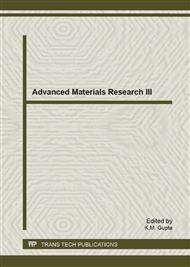p.211
p.216
p.223
p.228
p.233
p.240
p.245
p.250
p.259
Using the Asphalt Pavement Dynamic Stiffness Modulus in Assessing Falling Weight Deflectometer Test Results
Abstract:
Assessing pavement quality has attracted significant interest in the literature. Despite this interest, what has been commonly overlooked in pavement research are cost and time related constraints imposed by the various most frequently employed methods. This study develops an approach for the rapid assessment of pavement structural quality that can be readily implemented in the field and can lead to limiting testing budget. Assessment is based on the Dynamic Stiffness Modulus (DSM) that has been recognized as a fairly accurate indicator of pavement quality. Results indicate that a DSM value of less than 0.80 indicates poor pavement conditions and a value higher than 1.20 indicates good pavement structural conditions. Also, the DSM shows a relatively good correlation with the asphalt pavement modulus in flexible pavements and, since the DSM can be easily produced in the field during testing, it can also be used to ascertain the amount of FWD testing required at each testing section.
Info:
Periodical:
Pages:
233-239
Citation:
Online since:
April 2013
Authors:
Price:
Сopyright:
© 2013 Trans Tech Publications Ltd. All Rights Reserved
Share:
Citation:


